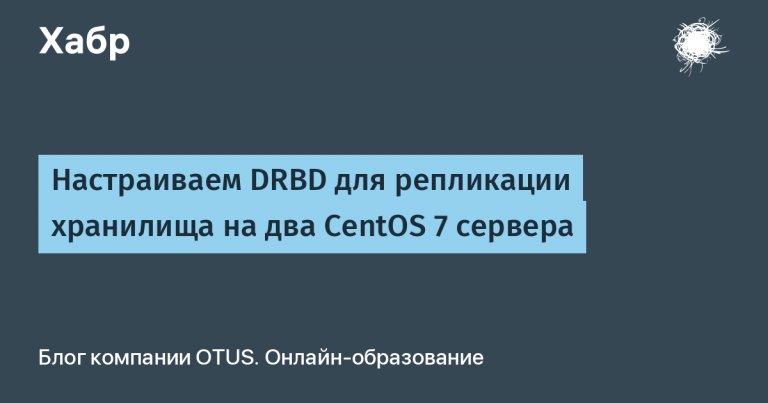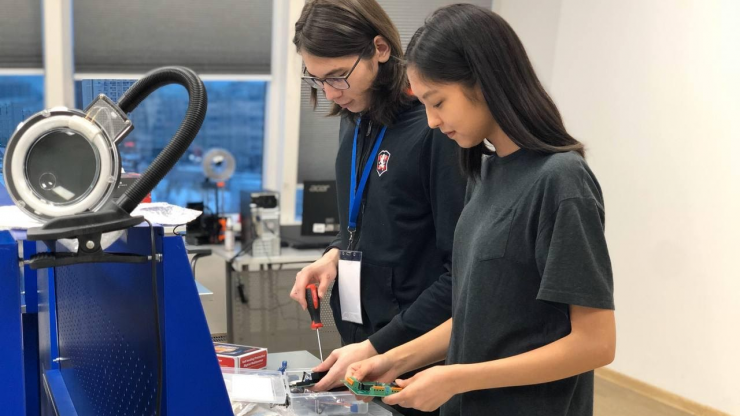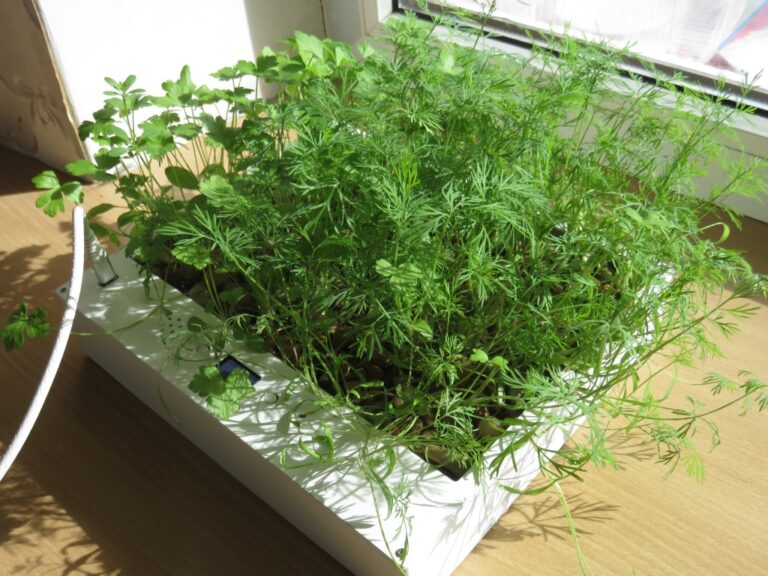Toshiba LED Bulbs
Toshiba LED bulbs have recently been on sale. I studied them, tested and measured the parameters.
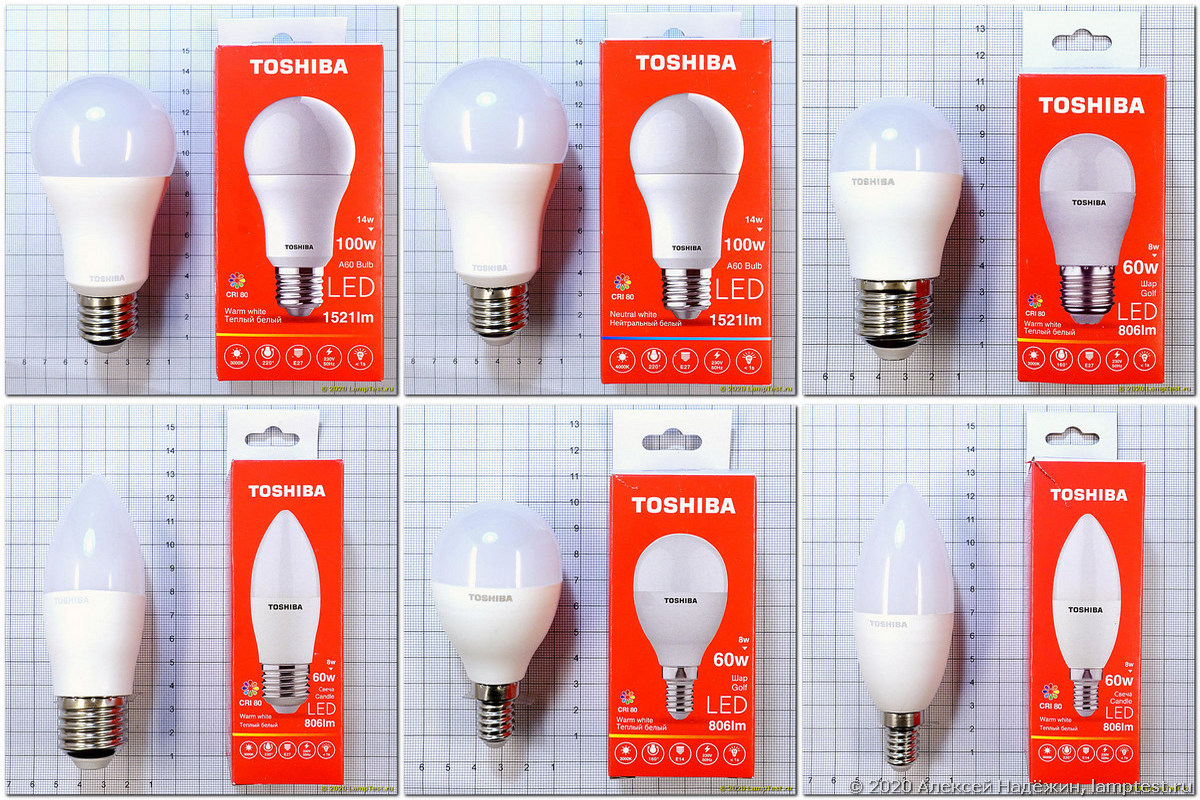
For Russia, Toshiba has released lamps with two color temperatures – 3000K and 4000K (lamps with a single color temperature of 2700K are sold in Europe).
The line includes bulb-pears with E27 base (5.5, 8.5, 11, 14 W), balls and candles E27 and E14 (5 and 8 W).
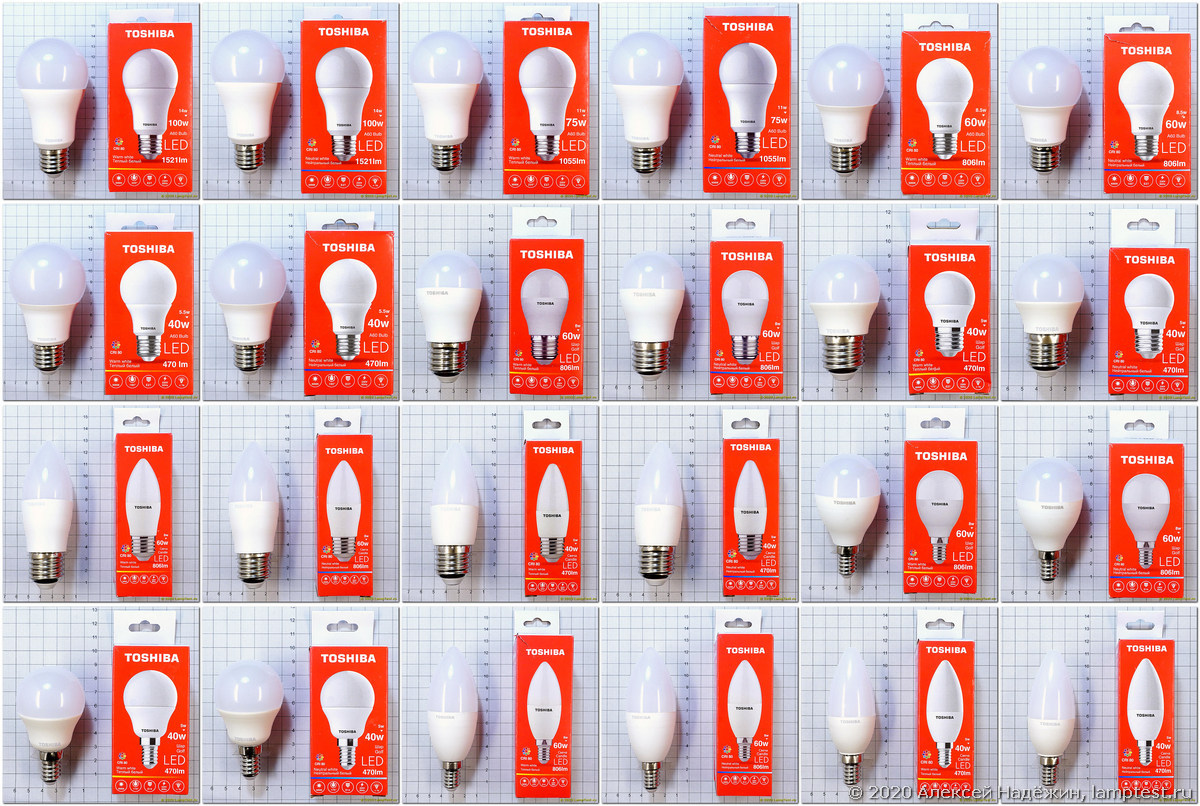
I tested two copies of each model. Test results for brighter specimens:
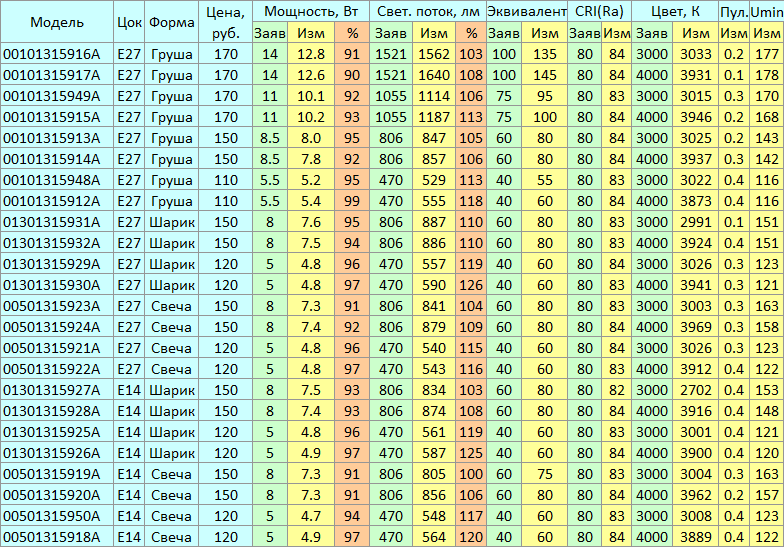
Test results for less bright specimens:
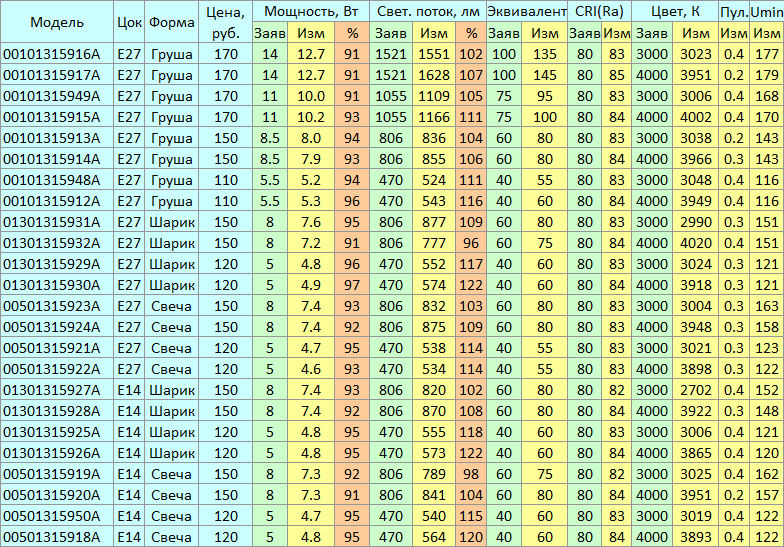
Spectra and measurement results of lamps with warm and neutral light using the example of A60 11 W lamps.
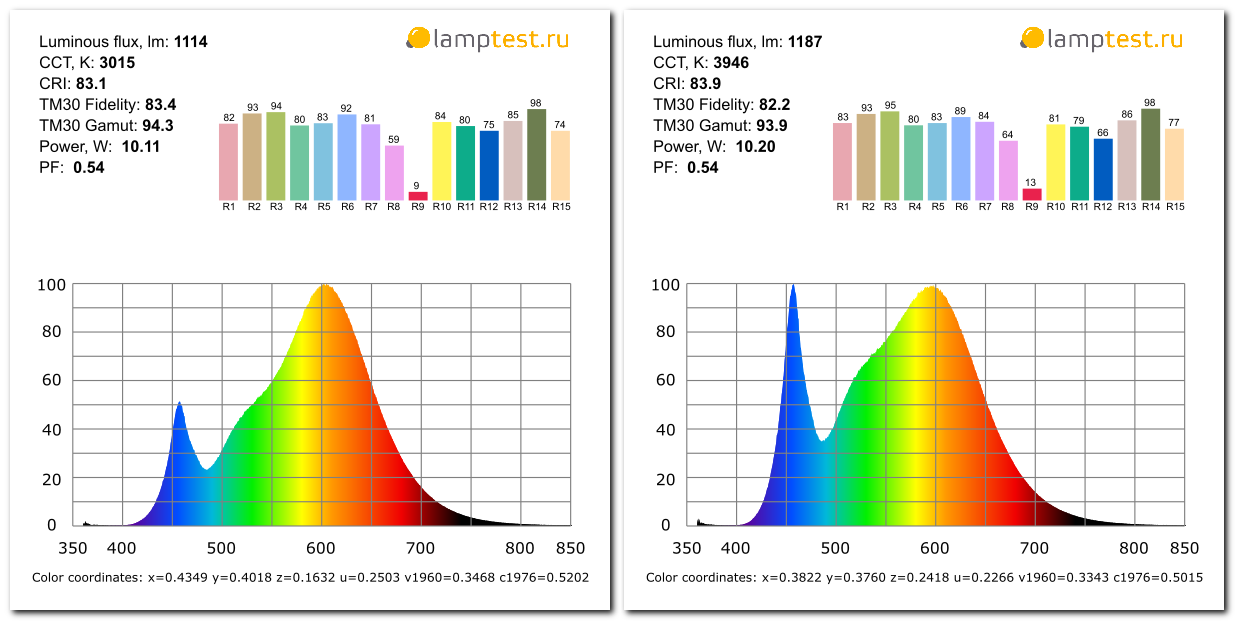
The light of all the lamps tested is safe and comfortable: the ripple coefficient does not exceed 0.4%, the CRI (Ra) color rendering index is 83-84 (it is believed that for lighting residential premises CRI should be higher than 80).
For all lamps, except for two, the measured luminous flux turned out to be 2-20% higher than the declared one. Two lamps have a luminous flux of 2% and 4% or lower than stated. In two other copies of the same lamp models, the measured luminous flux was higher (in one it exactly corresponded to the declared one, in the second it was more by 10%).
The measured power consumption differs from the declared one by no more than 9%.
The equivalent power for lamps is indicated according to the European standard (60 W – 806 lm), however, in fact, the lamps shine much brighter than incandescent lamps, the power of which is indicated on the package.
Almost all incandescent lamps sold in Russia give a significantly lower luminous flux than indicated in the European standard. And if we take into account the fact that in many regions the voltage in the network is still 220, and not 230 volts, incandescent lamps give even less light. Most manufacturers of LED lamps have adopted the equivalent power of 40 W incandescent lamps – 400 lm, 60 W – 600 lm, 75 W – 750 lm. 100 W – 1100 lm. Calculation of the equivalent for the actual brightness of incandescent lamps at a voltage of 220 volts is indicated in the table (“Equivalent measurement”).
The measured color temperature of all lamps is close to the declared one and differs from it by no more than 3%.
All lamps work correctly with switches that have an indicator. They do not light up or flash when the switch is off.
All lamps are built on IC drivers, so that their brightness does not change when the supply voltage is significantly reduced. The brightness decreases by no more than 5% when the supply voltage drops to 180 V for high-power lamps, to 150 V for medium-power lamps and up to 125 V for low-power lamps. The minimum voltage at which the brightness decreased by no more than 5% of the nominal is indicated in the table (“Umin”).
The difference between two lamps in terms of luminous flux does not exceed 3% for all lamps, except for one. The G45 8W E27 4000K lamp has a 14% luminous flux difference between the specimens, but even a lamp with a lower luminous flux fits into the requirements of GOST R 54815-2011 “LED lamps with a built-in control device for general lighting for voltages above 50 V”, allowing deviation luminous flux up to 10%.
The manufacturer indicates an honest service life of 15,000 hours and gives a 3-year warranty.
Luminous flux, color temperature and color rendering index were measured using a two-meter integrating sphere and an Instrument Systems CAS 140 CT spectrometer, power consumption and power factor with a Robiton PM-2 instrument, and ripple with an Uprtek MK350D instrument. The minimum operating voltage, at which the luminous flux decreased by no more than 5% of the nominal, was measured using a Lamptest-1 instrument, a Shtil Instab 500 stabilizer and a Suntek TDGC2-0.5 LATRa. To stabilize the parameters, the lamps were warmed up for half an hour before measurements.
The tested lamps showed excellent results, not typical for lamps on the Russian market. The measured parameters of the lamps correspond to the declared ones or better (despite the fact that most Russian brands significantly overestimate the parameters on the packaging). All lamps provide safe and comfortable light.
I am glad that at last more and more LED lamps with fair parameters and high-quality light appear on the Russian market. Toshiba is one of those lamps.
PS Test results for Toshiba lamps on Lamptest.ru: https://lamptest.ru/search/#&brand=Toshiba
© 2020, Alexey Nadezhin

